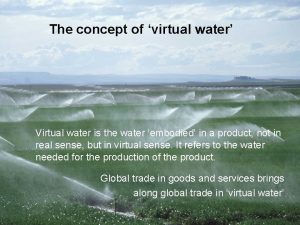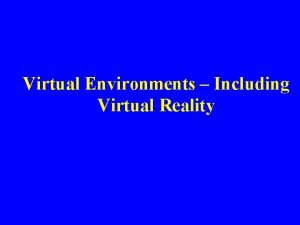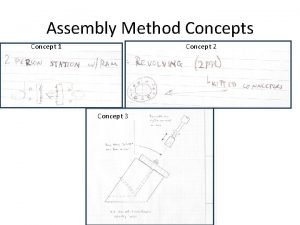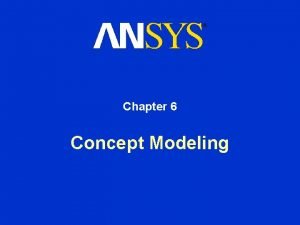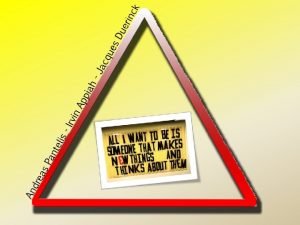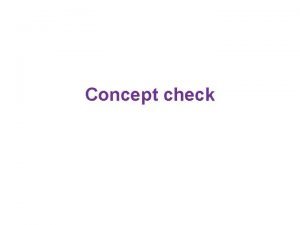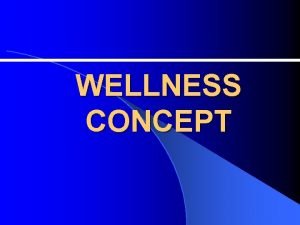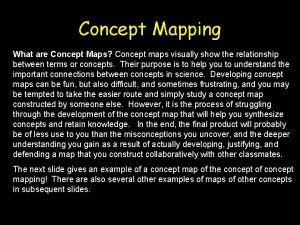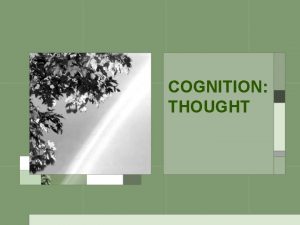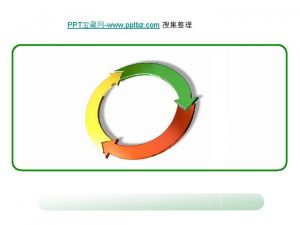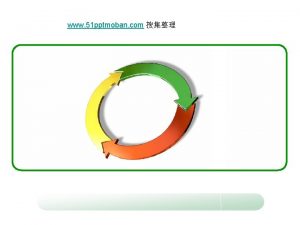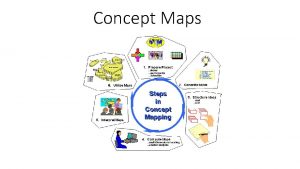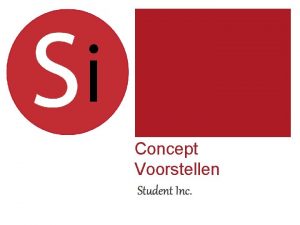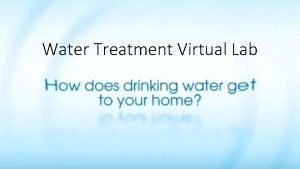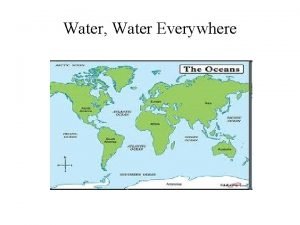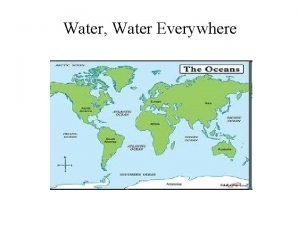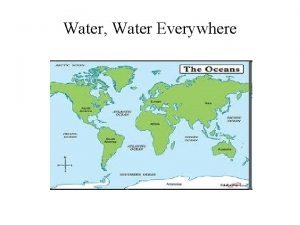The concept of virtual water Virtual water is















![Water footprint of Dutch coffee consumption [Hoekstra & Chapagain, 2008] Water footprint of Dutch coffee consumption [Hoekstra & Chapagain, 2008]](https://slidetodoc.com/presentation_image/53151a94b61f7a97ed02e5aabeff4b9a/image-16.jpg)



![Water footprint per capita [Hoekstra & Chapagain, 2008] Water footprint per capita [Hoekstra & Chapagain, 2008]](https://slidetodoc.com/presentation_image/53151a94b61f7a97ed02e5aabeff4b9a/image-20.jpg)


- Slides: 22

The concept of ‘virtual water’ Virtual water is the water ‘embodied’ in a product, not in real sense, but in virtual sense. It refers to the water needed for the production of the product. Global trade in goods and services brings along global trade in ‘virtual water’

► The Water Footprint of a product is the volume of fresh water used to produce the product, summed over the various steps of the production chain.

► The Water Footprint of a product is the same as its ‘virtual water content’, but includes a temporal and spatial dimension: when and where was the water used.

► The Water Footprint consists of three components: BLUE wf + GREEN wf + GREY wf

► Assessing the Water Footprint of a product requires analysis of the full production chain.

Production chain cotton

2500 litres of water for 1 cotton shirt

The water footprint of products global averages 1 kg wheat 1 m 3 water 1 kg rice 3 m 3 water 1 kg milk 1 m 3 water 1 kg cheese 5 m 3 water 1 kg pork 5 m 3 water 1 kg beef 15 m 3 water [Hoekstra & Chapagain, 2008]

40 litres of water for 1 slice of bread

1500 litres of water per kg refined sugar

1 egg = 135 litres water

= 140 litres of water

2400 litres of water for 100 gram of chocolate

10 litres of water for 1 sheet of A 4 -paper

► The Water Footprint is spatially explicit. Examples for coffee and cotton.
![Water footprint of Dutch coffee consumption Hoekstra Chapagain 2008 Water footprint of Dutch coffee consumption [Hoekstra & Chapagain, 2008]](https://slidetodoc.com/presentation_image/53151a94b61f7a97ed02e5aabeff4b9a/image-16.jpg)
Water footprint of Dutch coffee consumption [Hoekstra & Chapagain, 2008]

Water footprint of EU’s cotton consumption blue water + green water + gray water [Hoekstra & Chapagain, 2008]

► The Water Footprint of a nation is the total amount of water that is used to produce the goods and services consumed by the inhabitants of the nation.

► National Water Footprint = national water use + virtual water import – virtual water export
![Water footprint per capita Hoekstra Chapagain 2008 Water footprint per capita [Hoekstra & Chapagain, 2008]](https://slidetodoc.com/presentation_image/53151a94b61f7a97ed02e5aabeff4b9a/image-20.jpg)
Water footprint per capita [Hoekstra & Chapagain, 2008]

Water dependency of nations Many countries have net import of water in virtual form and a significant external water footprint: : n n n most of Europe North Africa Middle East Japan Mexico

Consumer perspective Reduction of the direct water footprint: n water saving toilet, shower-head, etc. Reduction of the indirect water footprint: substitution of a consumer product that has a large water footprint by a different type of product that has a smaller water footprint; n substitution of a consumer product that has a large water footprint by the same product that is derived from another source with smaller water footprint. n Ask product transparency from businesses and regulation from governments
 Water and water and water water
Water and water and water water Virtual water concept
Virtual water concept Hát kết hợp bộ gõ cơ thể
Hát kết hợp bộ gõ cơ thể Frameset trong html5
Frameset trong html5 Bổ thể
Bổ thể Tỉ lệ cơ thể trẻ em
Tỉ lệ cơ thể trẻ em Gấu đi như thế nào
Gấu đi như thế nào Thang điểm glasgow
Thang điểm glasgow Hát lên người ơi
Hát lên người ơi Kể tên các môn thể thao
Kể tên các môn thể thao Thế nào là hệ số cao nhất
Thế nào là hệ số cao nhất Các châu lục và đại dương trên thế giới
Các châu lục và đại dương trên thế giới Công thức tính độ biến thiên đông lượng
Công thức tính độ biến thiên đông lượng Trời xanh đây là của chúng ta thể thơ
Trời xanh đây là của chúng ta thể thơ Mật thư anh em như thể tay chân
Mật thư anh em như thể tay chân Phép trừ bù
Phép trừ bù Phản ứng thế ankan
Phản ứng thế ankan Các châu lục và đại dương trên thế giới
Các châu lục và đại dương trên thế giới Thơ thất ngôn tứ tuyệt đường luật
Thơ thất ngôn tứ tuyệt đường luật Quá trình desamine hóa có thể tạo ra
Quá trình desamine hóa có thể tạo ra Một số thể thơ truyền thống
Một số thể thơ truyền thống Cái miệng bé xinh thế chỉ nói điều hay thôi
Cái miệng bé xinh thế chỉ nói điều hay thôi Vẽ hình chiếu vuông góc của vật thể sau
Vẽ hình chiếu vuông góc của vật thể sau

